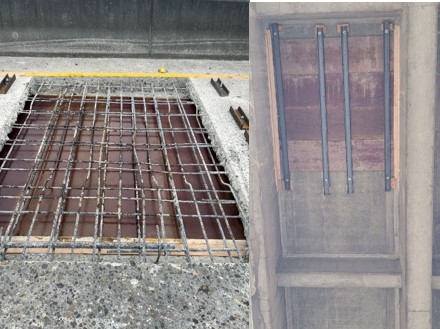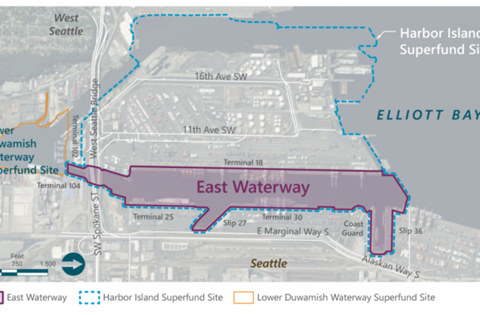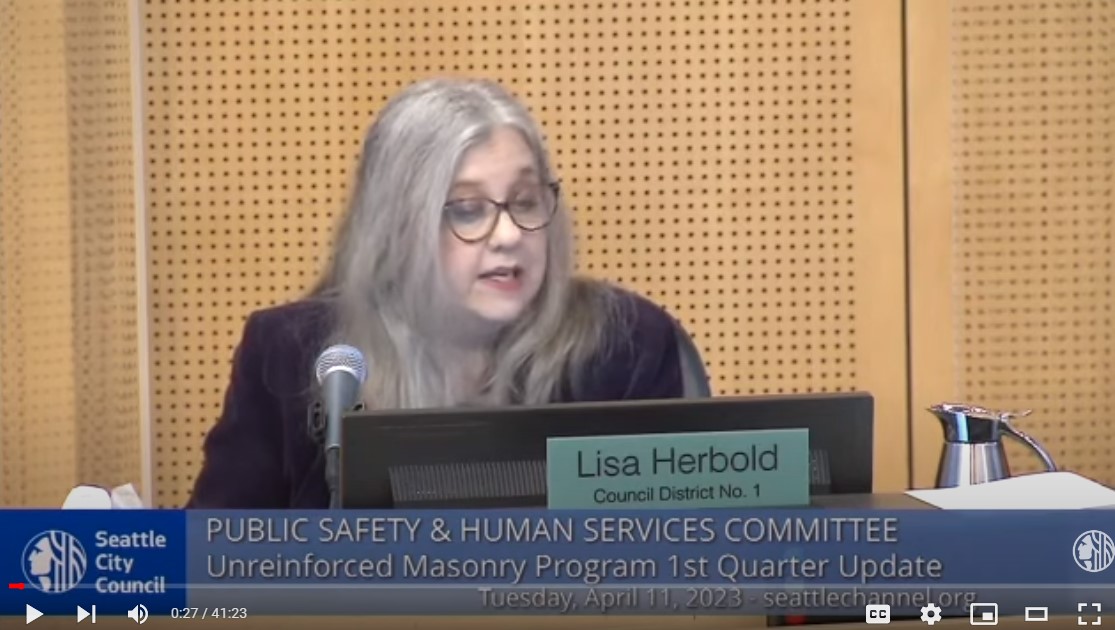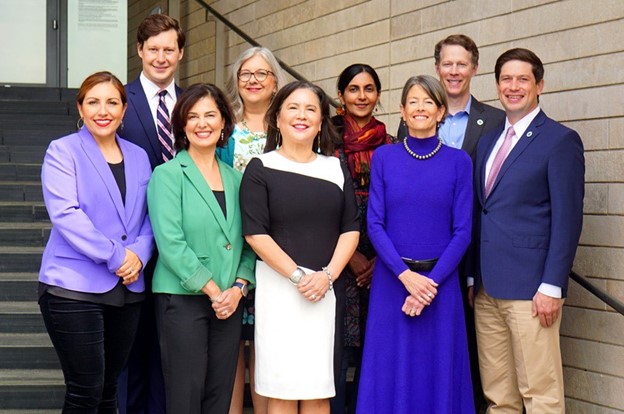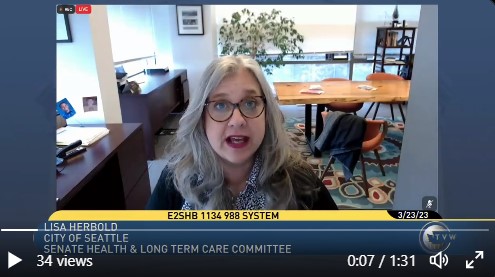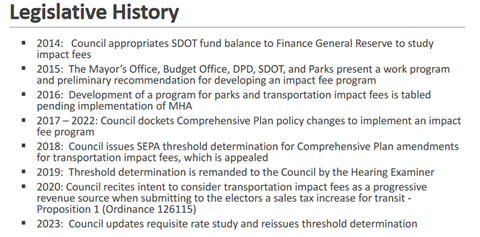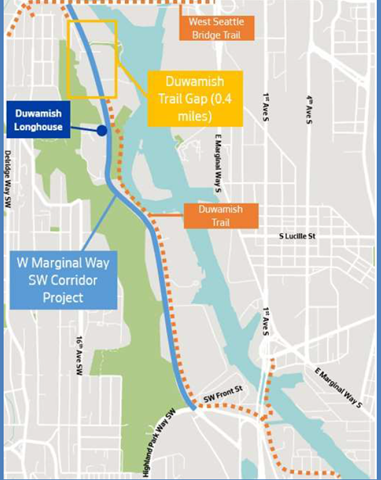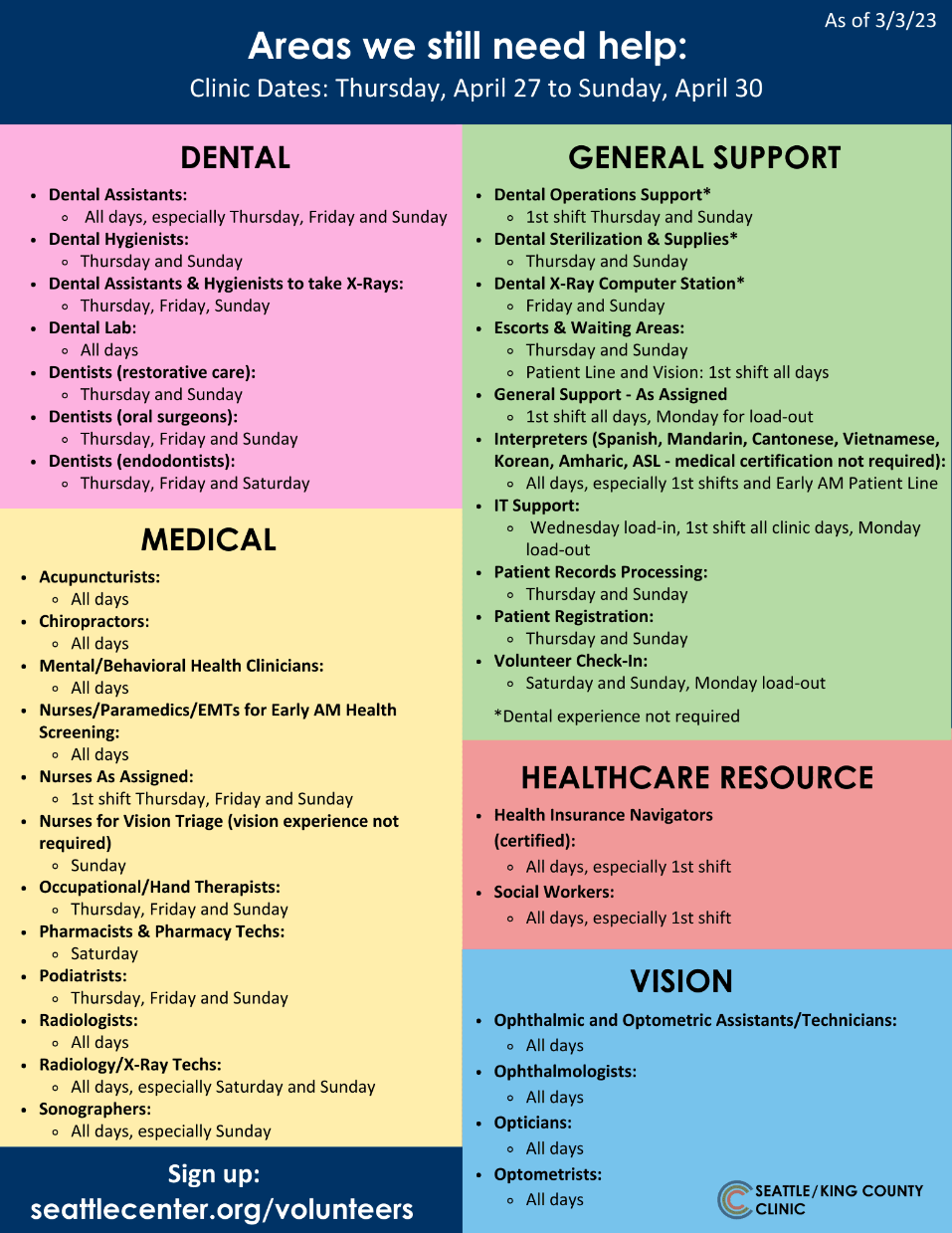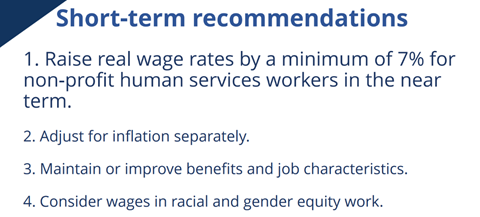West Seattle Bridge Update/SR 99 Ramp Update / Pay Equity in the News / Family Support Funding Available / Free eBooks for Teens & Young Adults / 2024 City Council Boundary Maps / Public Safety Jobs / SFD Fallen Firefighters Memorial / App-Based Workers PSST Effective May 1st
May 5th, 2023Contents
- West Seattle Bridge Update/SR 99 Ramp Update
- Pay Equity in the News
- Family Support Funding Available
- Free eBooks for Teens & Young Adults
- 2024 City Council Boundary Maps
- Public Safety Jobs
- SFD Fallen Firefighters Memorial
- App-Based Workers PSST Effective May 1st
West Seattle Bridge Update/SR 99 Ramp Update
Below are a few updates about the West Seattle Bridge and related facilities. First, I’ll start with the good news: the repair of the West Seattle Bridge is functioning as expected.
Last week my office asked SDOT for an update about the condition of the West Seattle Bridge, and ongoing monitoring, including the electronic monitoring system provides ongoing real-time updates.
Here’s what SDOT shared:
“In conjunction with monitoring the data from the structural health instrumentation, we have been conducting quarterly onsite inspections since the bridge has been reopened. The observations from the onsite inspection and review of the data from the monitoring system notes shows no anomalies regarding the expected structural behavior of the bridge. Because of the positive news, we are adjusting our onsite inspections to every six months for the upcoming year. We will continue to evaluate the frequency of the onsite inspection with the goal that the frequency of the inspection will be re-aligned to be consistent with Federal guidelines if the findings from the inspection and data continue to show a normal structural behavior.”
Secondly, my office also requested an update about the implementation schedule for remaining Reconnect West Seattle projects. Here’s the estimated schedule for the seven projects:
- S Elmgrove St conveyance swale – South Park – should be in construction soon (Q2)
- 14th Ave SW conveyance swale – Highland Park – should be in construction soon (Q2)
- Dallas Ave S corridor project – South Park – at 30% design; construction in 2024 most likely
- 4th Ave SW/SW Roxbury St/Olsen Way SW intersection improvements – Highland Park – Notice to proceed in May (construction starting in May)
- SW Holden St / Highland Park Way SW intersection improvements – Highland Park – Intent to award the project in May; anticipate construction to start a few months after
- Dallas Ave S / 14th Ave S intersection improvements – South Park – advertise before June 1; anticipate construction starting in Q3/Q4 2023
- Duwamish Longhouse signal crossing improvements – W Marginal Way SW – working with BNSF on acquiring comments and permits; intend to complete project in 2023 (construction start unknown)
Finally, as many of you are aware, on Tuesday evening WSDOT closed the ramp from the West Seattle Bridge to SR 99 northbound, due to a hole in the road deck. I appreciate SDOT’s rapid response team being the first to arrive on the scene. SDOT staff inspected the hole and alerted WSDOT, which is managing the repair, as the ramp is a state roadway. Here’s an image WSDOT shared Wednesday morning showing the hole, and exposed rebar:
On Wednesday, WSDOT said they were removing concrete around the hole and girders, and once that was done, would begin inserting new rebar, pouring new concrete waiting for it to cure. They also said they expected repairs to take 10 days. Here’s an image shared Thursday:
The ramp was closed for two weeks during April 2022 to repair a similar hole. This ramp remained open during the closure of the West Seattle Bridge and could be accessed from Spokane Street on the east side of the Duwamish.
On Wednesday, WSDOT said they were removing concrete around the hole and girders, and once that was done, would begin inserting new re-bar, pouring new concrete waiting for it to cure. They also said they expected repairs to take 10 days. Here’s an image shared Thursday:
Thursday evening WSDOT posted a thread with answers to the three most asked questions they’d received:
- When was this built? Is the ramp safe? When was it last inspected?
It was built in 1959 and last inspected on Aug 9, 2022. It passed that inspection. This damage developed quickly and wasn’t present then. All bridges are inspected at least every two years.
- How long has this hole been there? Why did it get so bad?
This damage developed quickly. We prioritize repair work that could be a hazard to travelers, so that’s why this damage is being addressed as quickly as possible.
- Why 10 days?
Crews are working quickly and safely to make a lasting repair. They’ve cleaned the hole’s edges to form a good bond. Now they’ll repair damaged rebar and pour concrete. Part of the timing is to be sure the concrete is cured to a strength to safely reopen.
On Friday morning WSDOT’s shared this update:
DAY 3 (May 5): Crews continue repair work on SR 99 NB onramp from the West Seattle Bridge. If you look closely, you can see the concrete form and panels in this photo.
Today crews will prep for the next phase of repair & concrete scheduled for delivery tomorrow.
They also shared updated photos from the surface and bottom of the ramp roadway:
SDOT indicated the report they received from WSDOT was that engineers from their Bridge Preservation Office evaluated the site on Wednesday morning to evaluate the damage and assess the best course of repair.
Pay Equity in the News
Last week I was glad to sit down with a reporter from King 5 News to discuss my efforts to increase wages for nonprofit human services workers. The report also includes an interview with researchers at the University of Washington School of Social Work, which found these workers experience a 37% pay penalty compared to jobs with similar requirements in a different sector.
The predictable result is that human services jobs go unfilled – or experience extreme turnover – and desperately needed services are not available. This includes services to care for our elders, provide food to hungry families, interrupt gun violence, and bring safety to survivors of gender-based violence. It also means that childcare classrooms and hotels for people experiencing homelessness sit empty – despite the critical need – because staff cannot be found to take on difficult work at such low wages.
I look forward to bringing a pay equity resolution to my Public Safety & Human Services committee for discussion and a possible vote on June 13th. Sign up to receive notifications of that meeting here: Agenda Sign Up – Council | seattle.gov
Family Support Funding Available
The City of Seattle Human Services Department (HSD) is seeking applications from organizations interested in providing services for low-income families that are focused on learning, healing, connecting, and celebrating unique aspects of their culture.
Approximately $3,827,366 is available through this Family Support RFP. Organizations may apply for up to $300,000. Initial awards will be made for the contract period of January 1, to December 31, 2024. For more information and RFP materials, please click here. Completed applications are due by 12:00 p.m. PDT, on Thursday, May 25, 2023.
For questions or assistance, reach out to Ann-Margaret Webb, Funding Process Coordinator, at ann-margaret.webb@seattle.gov.
Free eBooks for Teens & Young Adults
Seatle Public Library is joining Brooklyn Public Library’s Books Unbanned Initiative to fight censorship with free e-cards for young people. Anyone ages 13 to 26 who lives in the United States can now sign up for a free e-card from SPL that allows them full access to SPL’s collection of e-books and e-audiobooks.
Learn more and apply here: Books Unbanned | The Seattle Public Library (spl.org). Since launching last week, SPL reports they “had over 1000 card sign-ups in four days and more than 500 had already logged on and accessed their account.” Join them!
Books Unbanned counters efforts to remove books from public and school libraries across the nation. In March, The American Library Association’s Office of Intellectual Freedom reported that 2022 saw a record number of demands to censor library books and resources. More than 2,500 unique titles were targeted for censorship, a 38% increase over 2021. Of the reported book challenges, the vast majority were written by or about members of the LGBTQIA+ community and people of color.
2024 City Council Boundary Maps
The Department of Neighborhoods (DON) has published updated maps for the boundaries of Seattle’s seven City Council districts; the new boundaries will take effect at the start of 2024. The redistricting process is required every 10 years after the release of US Census data, to balance the population in each district and ensure equal representation. The new boundaries were approved by the Redistricting Commission created by Seattle voters in the ballot measure that adopted seven district council positions.
Through the end of 2023, District 1 will remain in West Seattle and South Park (including Harbor Island). In 2024, areas to the east of the Duwamish will be added: Georgetown, the SODO industrial area, and Pioneer Square. Additional neighborhoods were added to District 1 because the population increase was slower than the overall city average.
Maps for each of the 2024 Council Districts are located here. Here’s a map with the current boundaries.
DON’s update includes additional background information. Below is the 2024 map for the entire city:
Public Safety Jobs
Every day, thousands of City of Seattle employees clock in for a variety of functions across multiple departments – all to serve the residents of this city. Today, I wanted to highlight the opportunities to join careers in the three public safety departments in the city.
Police officers, firefighters, and 9-1-1 dispatchers collaborate with other departments and community partnerships to build equitable and expedient emergency responses across the city. We rely on these city employees to keep us safe and healthy while also building upon innovation as we reimagine how a city approaches community safety for all.
Careers in our public safety departments provide meaningful work, competitive pay, and opportunities for career development. Aside from the three positions I’m highlighting today, these departments also hire civilians for administrative, community engagement, and other kinds of work throughout the year. You can find job postings from all departments at the City’s job opportunities page.
All of our City departments are equal-opportunity employers that value diversity in the City workforce. Candidates from underrepresented communities in public safety industries are highly encouraged to apply.
Police Officers
Like most major cities across the country, Seattle’s police hiring has slowed and retirements have increased. In departments with more than 500 officers from 2019 – 2021 resignations increased by 43%. In departments with more than 500 officers from 2019 – 2021 retirements increased by 24%. In departments with more than 500 officers from 2019 – 2021 hiring decreased by 5%. A new study shows that hiring “seems to be picking back up, as responding agencies reported hiring more sworn officers in 2022 than in 2021, 2020, or even 2019—the last pre-pandemic year. However, agencies are losing officers faster than they can hire new ones, so total sworn staffing has continued to decline. Resignations are still increasing; responding agencies reported nearly 50 percent more resignations in 2022 than in 2019.” To work towards remedying this, Council has supported Chief Diaz in reaching for ambitious hiring goals every year by fully funding the SPD hiring plan and passing a series of budget allocations for additional incentives like recruitment bonuses and allowing the department to support out-of-state hires with relocation costs.
Applicants must be 20.5 years of age or older with a high school diploma or certified GED. Entry-level candidates will register and complete a series of exams including the Frontline National Exam, Public Safety Self-Assessment, and the Washington Physical Agility Test. Preference points are added to passing exam scores for military experience, fluency in multiple languages, and community service experience.
After all of the above tests are completed, candidates will participate in an oral board interview and those selected to move on to the next steps will go through the backgrounding process and complete a medical evaluation, psychological exam, and polygraph exam before hopefully receiving an offer of employment. From there, recruits attend the police academy and internal training before becoming sworn officers.
You can apply online and learn more about the application online on SPD’s website. If you have questions, you can learn more about a career with SPD on their jobs page or email SPDrecruiting@seattle.gov.
Firefighters/Paramedics
Seattle Fire Department does more than put out fires across our city. In fact, SFD’s Medic One Program has been a national leader in providing pre-hospital emergency medical services for the last 50 years. Firefighters/paramedics respond to things like house fires, traffic collisions, and medical emergencies in Seattle.
Applicants must be 18 years old to take the FireTEAM Test and Public Safety Self-Assessment video exams, with preference points applied to passing test scores for veterans. The top 25% of candidates who successfully pass all portions of the testing process will be added to a certified hiring list forwarded to SFD for further screening.
Eligible candidates will receive an employment packet to complete and schedule a suitability assessment before taking the Candidate Physical Ability Test. Successful candidates will participate in a formal business interview before receiving an offer of employment dependent on passing a medical, psychological, and background check.
SFD has just closed a hiring process in April of 2022, but you can sign up for updates about the next hiring process at this website. To learn more about a career with Seattle Fire, you can visit their jobs page or check out their hiring webinars on YouTube. Seattle Fire also participates in recruitment events throughout the year, including one this weekend: KCFCA Diversity & Recruitment Workshop | KC Fire Chiefs (kingcountyfirechiefs.org).
If you have further questions, you can send an email to SFD.Recruitment@seattle.gov.
9-1-1 Dispatchers
The Community Safety and Communications Center is one of Seattle’s newer departments, originally a division of the Seattle Police Department. The CSCC is the Public Safety Answering Point for 911 emergency calls placed in Seattle – the 911 dispatch center, where they currently process 911 calls and dispatch police or send calls to the Fire Alarm Center. Their responsibilities will soon be expanding with the development of our dual dispatch program.
To become a 9-1-1 Emergency Police Dispatcher, applicants will need to pass a keyboarding test at 40 words per minute, a multi-media performance test, and a hearing and vision screening as well as a psychological evaluation.
Upon hiring, CSCC dispatchers begin their intensive and extensive training to become the first point of contact for Seattle residents and visitors reaching out for emergency services.
You can apply to become a 9-1-1 Emergency Police Dispatcher on Seattle’s job postings website. This link shows a current posting that closes at the end of the month but check back regularly for openings in the CSCC and other departments in Seattle.
SFD Fallen Firefighters Memorial
This Friday, I was honored to participate in the Seattle Fire Department Annual Fallen Firefighters Memorial Day event. This remembrance is a salute to firefighters all over the country that sacrificed their lives while protecting their neighbors.
This event took place in Occidental Park, by Seattle’s own Fallen Firefighters Memorial – a special site dedicated to the memory of all Seattle firefighters who have gone before us in service to the City of Seattle. I encourage you to visit this touching tribute sculpture, which contains the names of firefighters who have given their lives to protect our community since 1889.
This year, Seattle added two more names to the memorial. In doing so, we give gratitude to Seattle Firefighters Matt Runte and Michele Williams, and sympathy to their families. To lose a loved one under any circumstances is always difficult. I hope they take some solace in knowing that the City of Seattle will always hold their memories through events like this one and through the etchings on the memorial structure.
It is indeed easy to get caught up in our daily routines and the new challenges that come across our desks every day, but it’s important for us to take the time to honor the memory of the people who have worked so hard to keep our city safe.
Thank you to all of our firefighters, past and present.
App-Based Workers PSST Effective May 1st
In March, Seattle became the first city in the country to make permanent Paid Sick and Safe Time (PSST) requirements for app-based food delivery workers. A temporary ordinance was passed during the City’s state of emergency due to the COVID-19 pandemic, but as an emergency ordinance, it expired shortly after we ended the state of the emergency declaration.
City Council heard feedback from app-based workers that this was a necessary basic labor right, one offered to more traditional employees for over a decade in Seattle now. So, on March 28, City Council voted to pass a permanent version of this ordinance.
“Under the temporary pandemic ordinance, OLS resolved $5,800,000 in settlements that impacted nearly 21,000 gig workers. The permanent protections under the new App-Based Workers PSST Ordinance will reinforce our ability to provide outreach, education, and enforcement for an even larger group of workers,” said OLS Director Steven Marchese.
Currently, the law applies to food delivery network company workers who work for a network company that hires more than 250 workers. These workers who have worked in Seattle at least once in the past 90 calendar days will accrue one day of Paid Sick and Safe Time for every 30 days with at least one work-related stop in Seattle and may use PSST in 24-hour increments for health and safety-related reasons.
In January of 2024, the law will expand to cover all app-based workers who work at network companies that hire more than 250 workers, in order to align with other app-based workers protections sponsored by Councilmember Lewis and myself: PayUp Legislation – Council | seattle.gov
These permanent PSST protections went into effect, appropriately, on May 1st, International Workers’ Day.




